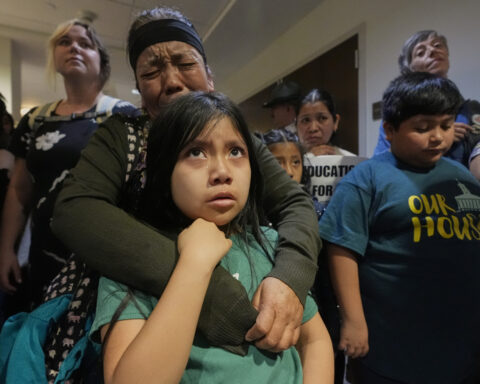(CNN) — Sky-gazers across the Western Hemisphere will be in for a celestial treat this week when the full moon appears to turn crimson during a total lunar eclipse.
The eclipse will be visible in western African and western Europe, the Americas, eastern Australia, New Zealand, northern Japan and eastern Russia Thursday evening and Friday morning, depending on where you live, according to EarthSky. Check Time and Date’s website to see exactly when the eclipse will be visible over your area, weather permitting.
A lunar eclipse occurs when Earth is between the sun and moon and the three celestial objects line up in a nearly perfect row, with Earth in the middle, so that the moon passes into our planet’s shadow. This alignment of bodies in space is called syzygy.
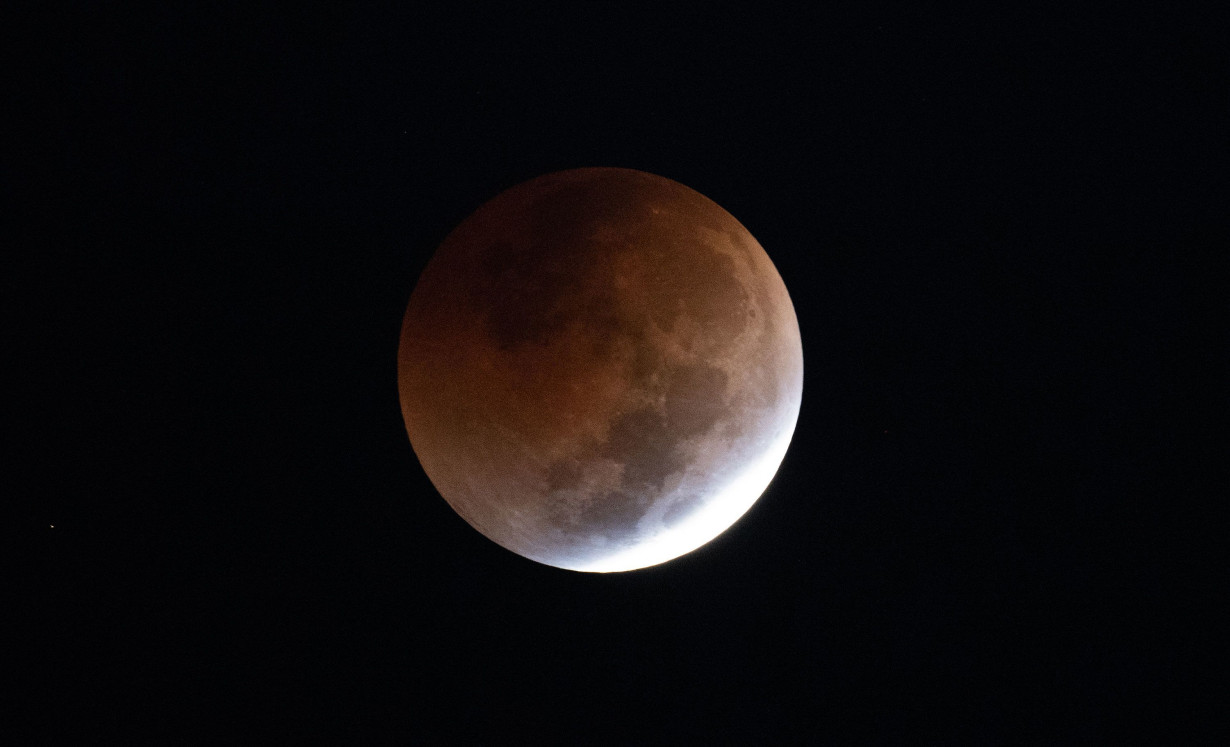
When the moon is within the darkest part of Earth’s shadow, called the umbra, it takes on a dramatic reddish hue, which has led to the nickname “blood moon” for a lunar eclipse, according to NASA. That shadow isn’t perfect, so faint sunbeams sneak around the shadow’s edges on all sides in the colors of a sunset, bathing the moon in brilliant, warm hues.
The peak of the total eclipse will begin at 2:26 a.m. ET Friday and last for about an hour, but there will be plenty of excitement before and after.
“With March being a pretty typical month for spring showers, there’s roughly a 50/50 chance it’ll be cloudy, so keep a close eye on the weather forecast leading up to the eclipse,” said Dr. Renee Weber, chief scientist at NASA’s Marshall Space Flight Center in Huntsville, Alabama, in a statement. “That totality will last for close to an hour, so even if it’s cloudy you may still be able to glimpse it if the clouds are scattered.”
While binoculars or telescopes will certainly enhance your viewing experience, no special equipment is needed to observe a lunar eclipse — and no special eclipse glasses are needed because looking at the full moon is not damaging to the eye.
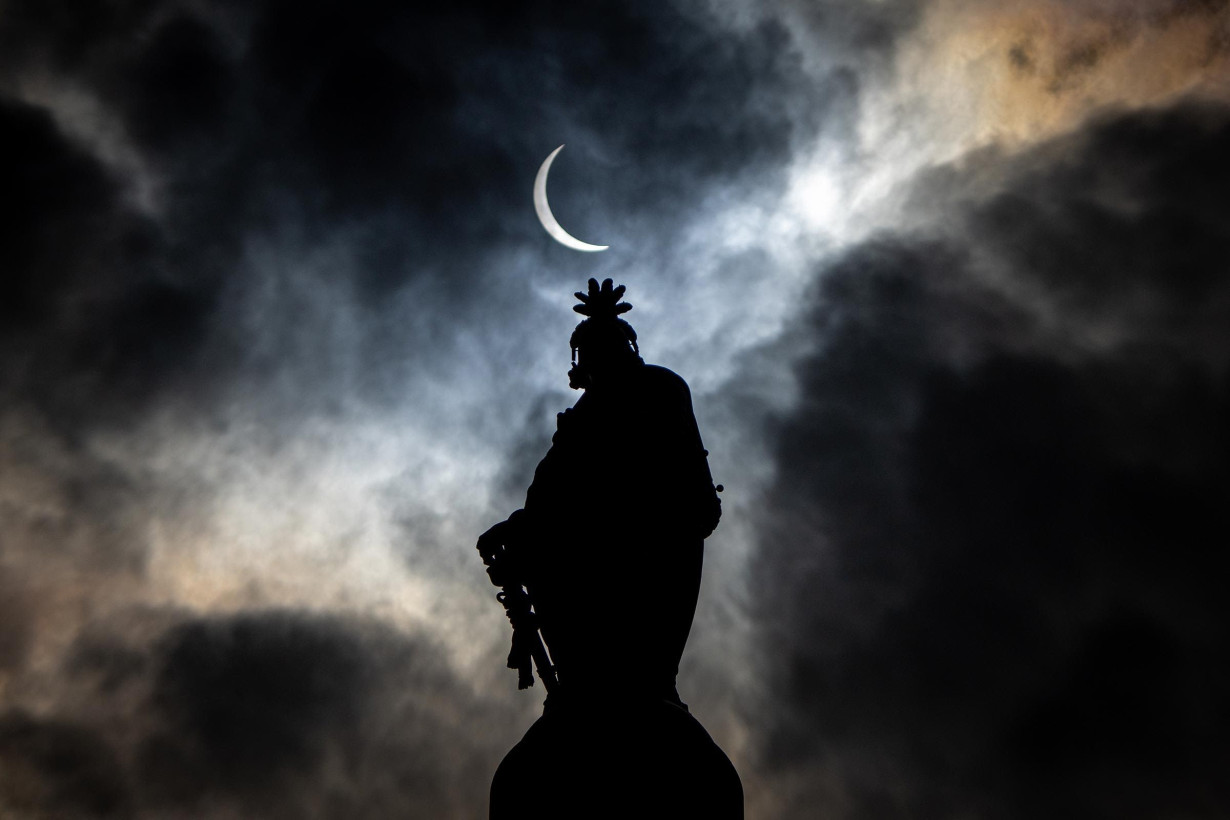
Head to a spot that’s away from bright city lights and prepare for a special lunar sight that hasn’t been glimpsed since November 2022. Here’s everything you need to know.
What to expect during the eclipse
Unlike how the sun seems to disappear during the “totality” phase of a total solar eclipse, the moon will still be visible during the total lunar eclipse because sunlight passing through Earth’s atmosphere will reach the moon’s surface. This dim lighting will cause the moon to appear orange or red — and the more clouds or dust in our atmosphere, the redder the moon will appear, according to NASA.
While totality typically only lasts for a few minutes with a total solar eclipse, the moon during this week’s event will spend just over an hour in Earth’s shadow. But that’s not the start of the show. Like all eclipses, there are different phases to monitor during a lunar eclipse as it takes the moon about six hours to slowly make its way through Earth’s shadow and emerge on the other side.
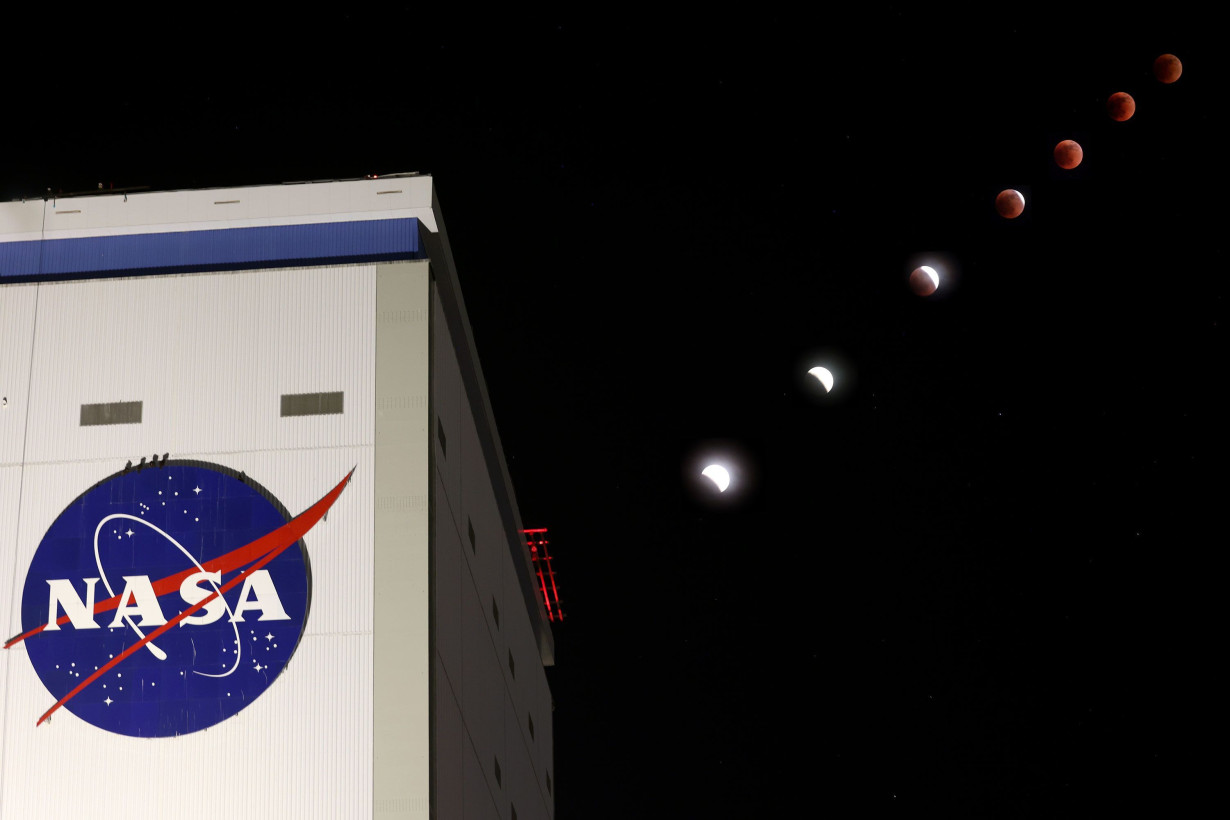
First, the moon will enter Earth’s penumbra, or the outer part of its shadow, at 11:57 p.m. ET Thursday. While the moon may appear to slightly dim, it will be incredibly subtle, without any difference visible until around 12:30 a.m. ET Friday, according to Sky & Telescope.
The partial eclipse, during which it looks like a bite has been taken out of one side of the moon, will begin at 1:09 a.m. ET as the moon enters Earth’s umbra, or its inner shadow, according to NASA.
Earth’s round shadow will shift across the moon’s face, moving from lower left to upper right, and the portion of the moon within the umbra will initially appear very dark.
The entirety of the moon will be within Earth’s umbra beginning at 2:26 a.m. ET for 65 minutes. The eclipse peak is expected at 2:59 a.m. ET, and totality will end at 3:31 a.m. ET.
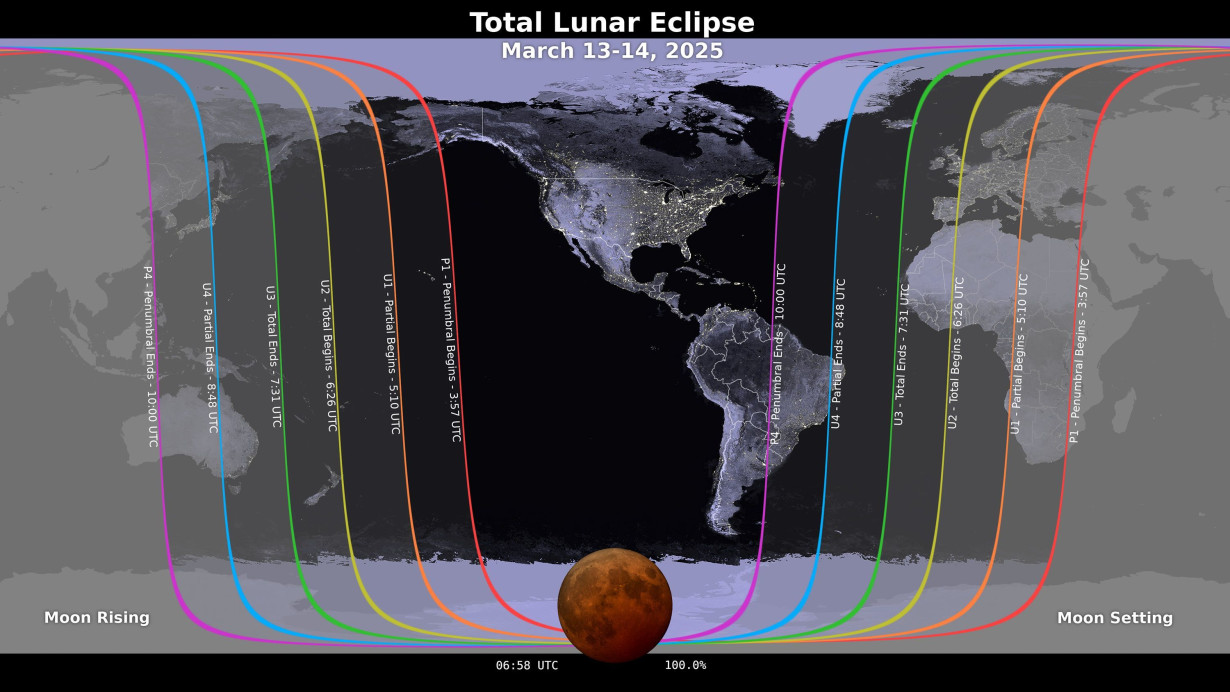
During totality is when the moon will appear coppery, orange or red, depending on the conditions of Earth’s atmosphere. This is when binoculars or a telescope may come in handy, as well as long-exposure images taken with a camera on a tripod for stability.
Then, the eclipse will essentially unfold in reverse. The moon’s red hue will fade as it slowly leaves Earth’s inner shadow, receding from upper left to lower right, making it look like a bite has been taken out of the other side, until 4:48 a.m. ET. The moon will then fully exit our planet’s outer shadow at 6 a.m. ET, ending the eclipse.
During the eclipse, Jupiter and Mars will also be visible in the western sky. And as Earth’s shadow causes the moon’s bright glow to dim, it might be easier to spot constellations.
The full worm moon
Total lunar eclipses always occur during the full moon, and in this case, it’s during March’s worm moon. The moon will be at its fullest at 2:55 a.m. ET on Friday morning, but it will appear full into Saturday morning, according to NASA.
Previously, it was believed that some indigenous tribes referred to March’s full moon as the worm moon in reference to earthworms that would appear in the soil as warmer temperatures welcomed the spring season. But worms may have actually been a reference to beetle larvae emerging from the thawing bark of trees, according to the Old Farmer’s Almanac.
The first moon of the spring season has a multitude of other monikers across various indigenous groups.
The Creek refer to it as the little spring moon, the Pueblo peoples’ name for the moon translates to “moon when the leaves break forth,” and the Shawnee call it the sap moon.
March’s full moon is also considered to be a micromoon, which occurs when the moon is at its greatest distance from Earth and appears about 7% smaller than a typical full moon, according to EarthSky.
The moon will be 249,823 miles (402,051 kilometers) away from Earth on Friday, versus its average distance of 238,855 miles (384,400 kilometers), according to NASA.
More eclipses to follow
Eclipses tend to occur in pairs, so a solar eclipse typically takes place a couple of weeks before or after a total lunar eclipse, according to NASA.
This time, it will be a partial solar eclipse that occurs on March 29.
A partial solar eclipse occurs when the moon moves between the sun and Earth, but the celestial bodies aren’t perfectly aligned, according to NASA. The moon only blocks part of the sun’s face during a partial solar eclipse, creating a crescent shape in which it appears the moon is taking a “bite” out of the sun.
The partial solar eclipse later this month will be visible across parts of Europe, Asia, Africa, and North and South America.
A similar pattern will repeat in the fall, with a total lunar eclipse shortly followed by a partial solar eclipse.
The second total lunar eclipse will be visible from Europe, Asia, Australia, Africa, parts of eastern South America, Alaska and Antarctica on September 7 and 8. The second partial solar eclipse will fall on September 21 and people in parts of Australia and Antarctica as well as some islands in the Pacific Ocean will be able to see it.
Check Time and Date’s website to see when each of these eclipses will appear and the specific locations that will be able to view them.
The-CNN-Wire
™ & © 2025 Cable News Network, Inc., a Warner Bros. Discovery Company. All rights reserved.

 Trump has begun another trade war. Here's a timeline of how we got here
Trump has begun another trade war. Here's a timeline of how we got here
 Canada's leader laments lost friendship with US in town that sheltered stranded Americans after 9/11
Canada's leader laments lost friendship with US in town that sheltered stranded Americans after 9/11
 Chinese EV giant BYD's fourth-quarter profit leaps 73%
Chinese EV giant BYD's fourth-quarter profit leaps 73%
 You're an American in another land? Prepare to talk about the why and how of Trump 2.0
You're an American in another land? Prepare to talk about the why and how of Trump 2.0
 Chalk talk: Star power, top teams and No. 5 seeds headline the women's March Madness Sweet 16
Chalk talk: Star power, top teams and No. 5 seeds headline the women's March Madness Sweet 16
 Purdue returns to Sweet 16 with 76-62 win over McNeese in March Madness
Purdue returns to Sweet 16 with 76-62 win over McNeese in March Madness
